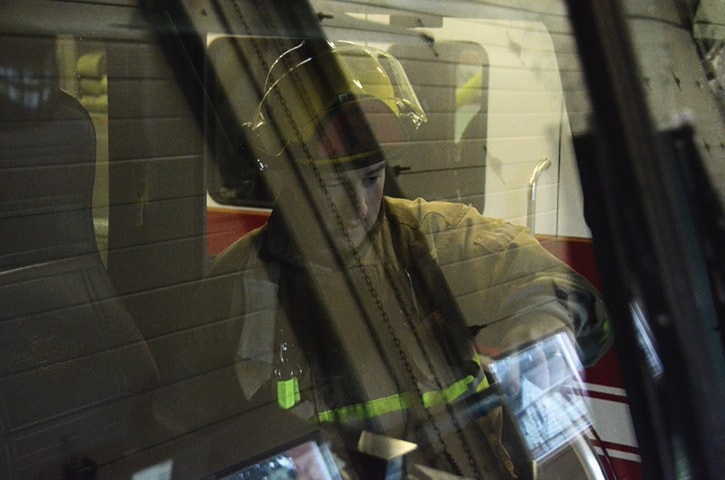The Langford Fire Department refers to you as Mrs. Smith.
Well, it’s not just you – they refer to all members of the community as Mrs. Smith.
And they want to provide high levels of service to each and every one of the Mrs. Smith’s in the community.
But the department has only eight paid staff and 60 volunteers, a rapidly growing population to serve, limited financial resources with which to do so and no more expected anytime soon. They realized years ago that changes were necessary if they were to continue to provide a level of service to Mrs. Smith that both they and the community could be proud of.
“We’ve gone from one or two calls a day to five or six calls a day,” says Langford Fire Chief and emergency program co-ordinator Bob Beckett. The three stations respond to approximately 1,500 calls per year, he says, and there’s no sign of it slowing down.
“As we transition from 18,000 people to 25,000 people to now 35,000 people – and in the very foreseeable future, 40,000 people – how is that sustainable?” he asks rhetorically.
Six or seven years ago, not wanting to reinvent the wheel and knowing that change was inevitably coming, Beckett says, the department approached the International Fire Chiefs’ Association with a question: “Who has the most progressive composite fire department (both paid and volunteer members) in North America?”
 In reply, they got a list of names.
In reply, they got a list of names.
They found a department in Ponderosa, Texas, that had implemented a model based on very few paid staff, and volunteers on stipend, which allowed for a fiscally responsible department that could grow organically with the community and provide excellent levels of service.
“We took a look at it, and we thought that if we could get everyone’s co-operation on this model, it was doable,” Beckett says.
They tweaked the model a bit to work here, he says, as a way the department could provide better levels of service without jeopardizing other important programs in the community. They needed the new model to not pull money out of other services or programs, Beckett adds, because that wouldn’t be best serving the public, who also want “parks and pools and roads and schools and everything else that makes this community great.”
The new model sees one paid staff member and three volunteers at the station at all times, working in shifts, so they can ensure at least one engine can be manned at any given moment.
“We now have an engine company essentially staffed seven days a week, 24 hours a day,” Beckett says.
The new model was implemented last September. In a recent report to council, the department illustrated the kind of results the changes have produced in just four months.
“On average, our response time has gone down three and a half minutes,” the chief says. “If your loved one is having a heart attack, or if you have a room and contents on fire, three and a half minutes is the difference between saving a life or not, or losing a house or saving it. Fires double in size every 30 seconds, so …” he leaves the statement open-ended.
The department also feels the new model will help with volunteer retention, he says.
“We’re blessed that we have such dedicated men and women in our community, but we were continually asking them for more and more each year, and we felt that we had to balance these things out.”
Under the new system, volunteers on stipend remain at the fire hall throughout their shift, and are first to respond to calls. Only the most serious events – those where more than one truck is required – will require additional volunteers to be paged, which means more uninterrupted family time at home. Normally the department recruits an average of eight new volunteers per year to replace those who have retired, but this year, they’re only recruiting five – and all those retirements happened before the implementation in September.
“I think it’s a great concept,” Beckett says. “I’m willing to bet that there will be interest in it from other communities who are trying to address their own municipal challenges associated with growth.
“We’re doing something unique here and, I think, pretty special.”
